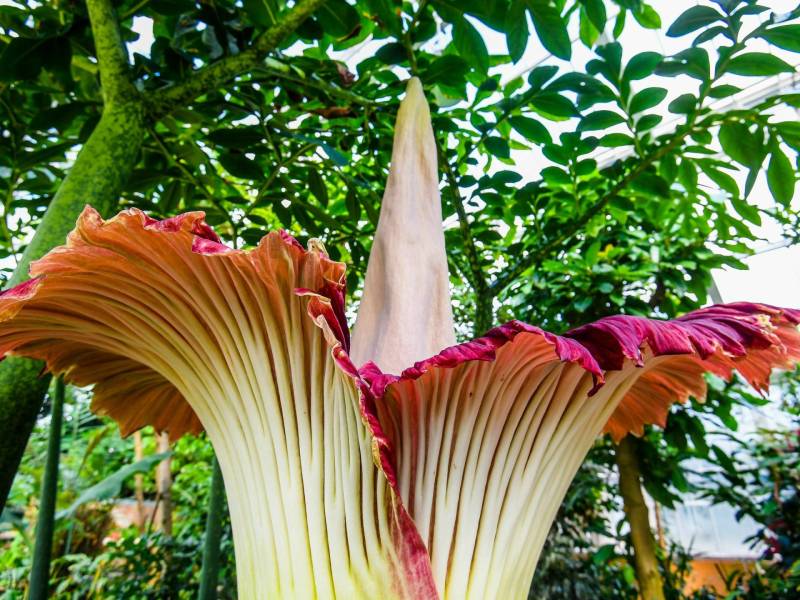The Titan Arum, or corpse flower, has become a rockstar in the plant world for its unpredictable displays, and more notoriously, its putrid stench of rotting flesh.
What is it? The very large flowering plant is related to the calla lily, and in fact looks like a supersized and more macabre version, with a large central spike surrounded by a frilly maroon skirt of a leaf.
- The Titan Arum is native only to the Indonesian island of Sumatra, but has become even more difficult to see in the wild due to habitat loss. In the last few decades, advances in technology and horticultural knowledge have allowed botanical gardens to cultivate the corpse flower more widely.
- If you’re not familiar with why the flower has its distinctive name — when the corpse flower unfurls, tiny male and female flowers at the base of its large central spike emit a putrid odor, akin to rotting meat and stinky laundry.
- Titan Arums have a fairly long and unpredictable flowering cycle, and they can take up to a decade before they flower for the first time. Even mature plants can go years between blooms. Essentially, they work on their own schedules — which is part of the excitement for viewers.

9(MDAxOTAwOTE4MDEyMTkxMDAzNjczZDljZA004))

